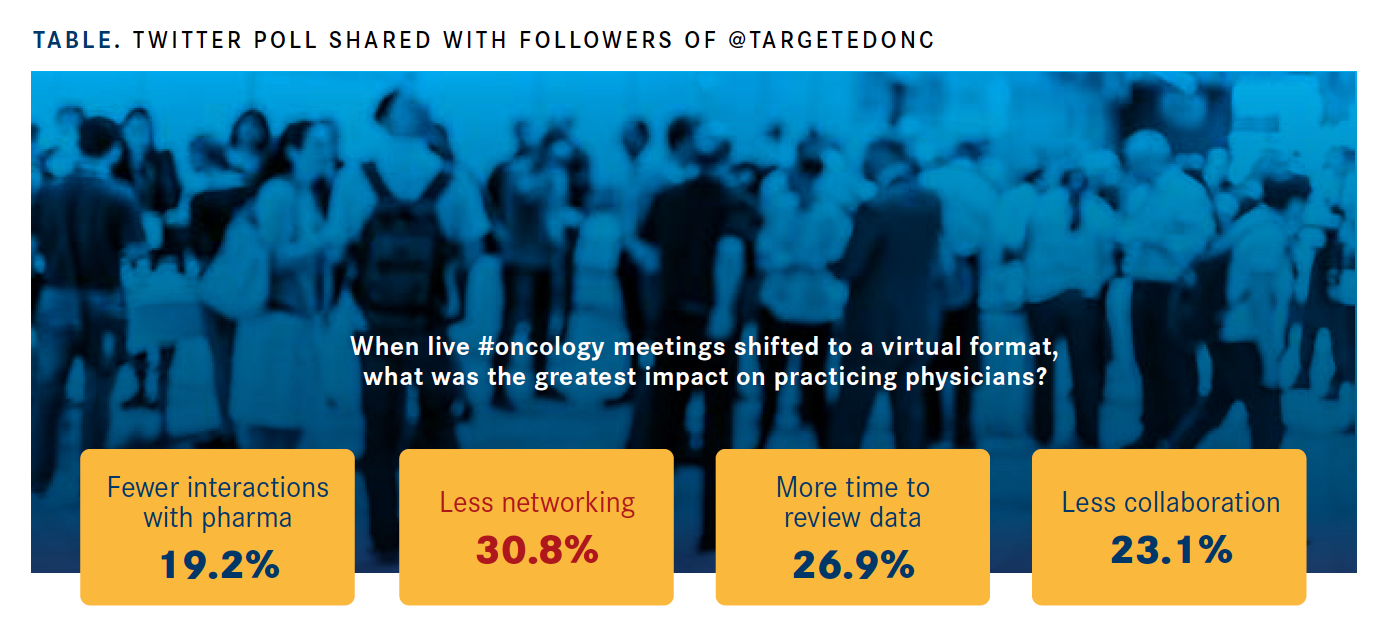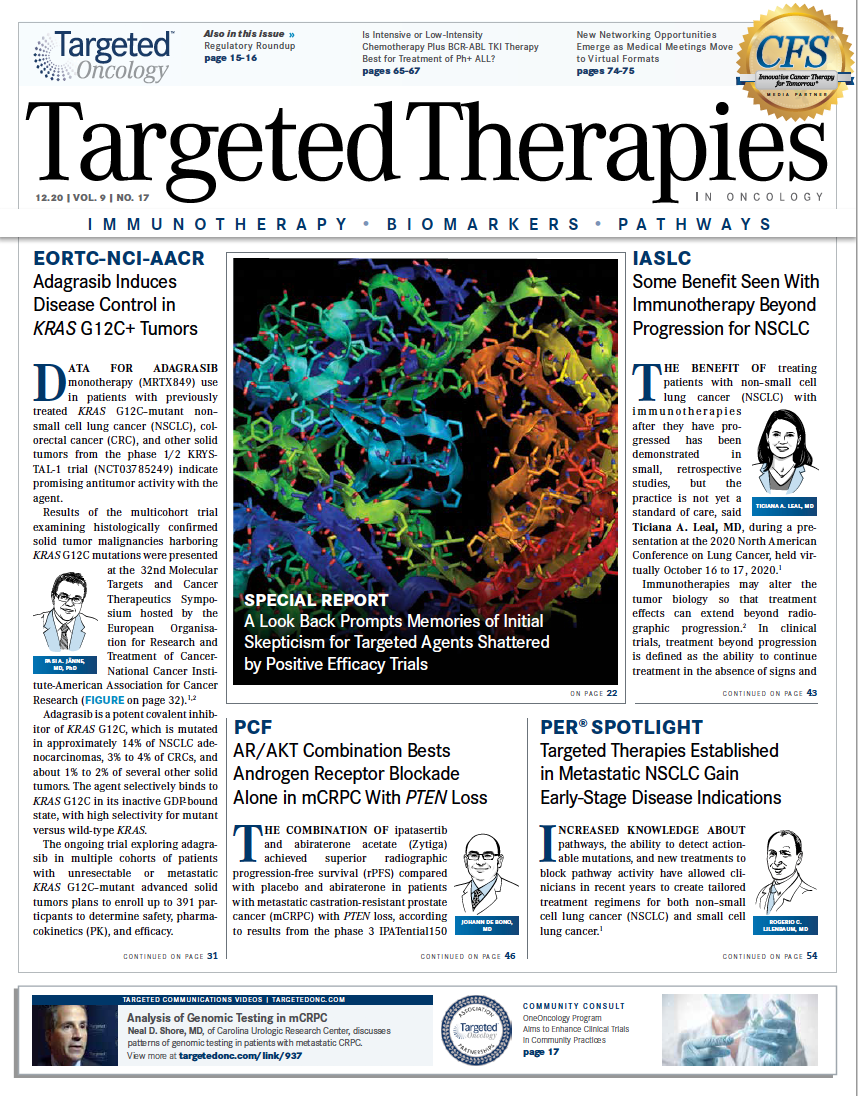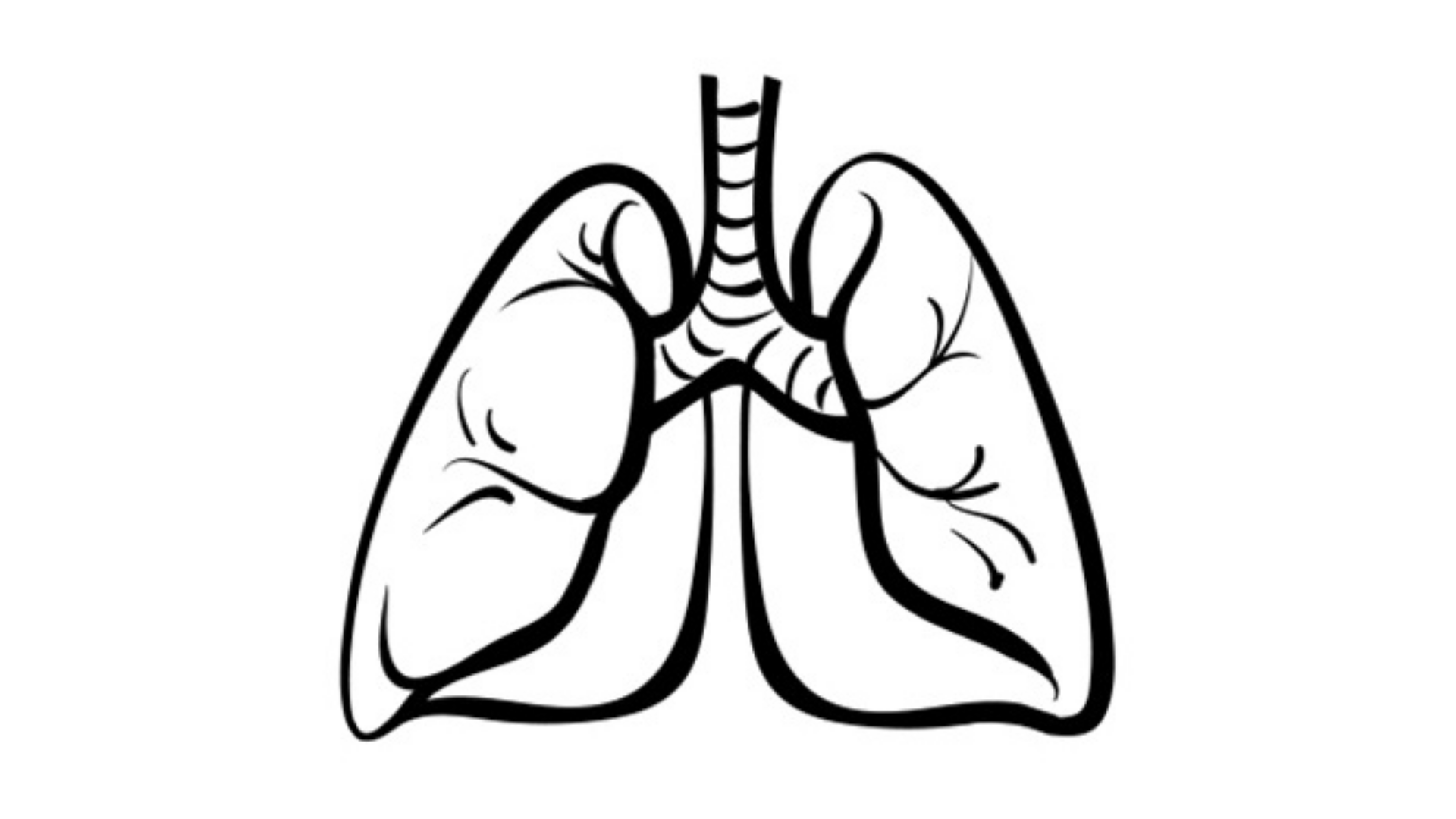New Networking Opportunities Emerge As Medical Meetings Move to Virtual Format
The COVID-19 pandemic has brought about a currently interminable pause on in-person professional networking.

The medical community has has felt the far-reaching impacts of travel bans caused by the 2019 coronavirus disease (COVID-19). Yet, the unexpected shift in daily activity may prove to have some lasting positive changes that provide alternative networking opportunities by virtual platforms. By the end of March, restrictions on travel had effectively canceled, delayed, or altered the format of all 2020 medical conferences, affecting both national and international events. Major organizations such as the American Society of Clinical Oncology (ASCO) and the European Society for Medical Oncology, for example, successfully converted their planned presentations to a virtual format.
For many providers, especially those in the oncology sector, these meetings often contribute greatly to their professional development. Pertinent educational content that allows society members to learn about significant clinical updates and best practices are coupled with opportunities to engage with mentors or even collaborate on potentially groundbreaking future research. Thus, networking among colleagues is a vital aspect of these meetings, regardless of experience level.
Hiatus for In-Person Networking Opportunities
The COVID-19 pandemic has brought about a currently interminable pause on in-person professional networking. However, virtually connecting face-to-face with others as a vital means of communication is more accepted than ever before, thanks to relatively recent advances in online platform technology.
In a Twitter poll, followers of @TargetedOnc indicated that the greatest impact of medical conferences shifting to a virtual platform is the effect on networking opportunities (FIGURE), a critical component of the in-person model.
A self-described early-career clinician, Ishwaria M. Subbiah, MD, MS, has felt the effects of the current model. Discussing the downfalls of virtual meetings and conferences, she indicated that those smaller, casual in-person events intended to promote networking, such as coffee breaks or time spent in early-career lounges, “are challenging to reproduce” in a virtual platform. She went on to say that the loss of these opportunities is especially profound for those who find it difficult to have an extroverted voice on the virtual platform.
Subbiah added that “loss of informal events is palpable and difficult to quantify.” She identified “the unidirectional flow of information” presented during large online meetings as “a fundamental flaw [of] the virtual platform.” Expressing several obstacles, both personal and professional, she explained that the challenges of listening to an online meeting with young children at home are not easy to overcome.
“The value of face-to-face contact should not be diminished. The virtual platform has its strengths but when we reflect on... this virtual existence, we really see the value of interacting face to face and in person…. We really do feel that loss and it’s hard to quantify that loss,” Subbiah said.
In the spirit of future planning, Subbiah, who is a medical oncologist and palliative care physician at The University of Texas MD Anderson Cancer Center in Houston, went on to say that it is critical to embrace elements of the virtual experience as much as possible. Although she understands that online participation in medical conferences can initially seem like an isolating experience, making “a concerted effort to engage in nontraditional ways” can prove fruitful for attendees. Subbiah said that a loss of informal networking events unmistakable, but valuable connection remains possible through programming that continues after the conference has ended, such as via webinars or quasi–task force groups.
She also mentioned her participation in multiple social media groups relevant to her practice, such as a hematology/oncology women physicians’ group that has recently planned programs that encourage increased participation through smaller group conversation. These types of activities provide more of an open invitation to all, regardless of experience.
Positive Changes Are Here to Stay
Although difficulties arise surrounding virtual medical meetings, Subbiah was quick to add several positive takeaways. She explained that regardless of all the medical meetings on her calendar being cancelled or postponed from February 2020 on, she was able to attend these events via virtual format, with some even offering discounted or free registration rates for potential attendees.
On a more personal note, she stated, “[Shifting to] the virtual platform opened up the world. I have given 3 talks so far to different groups in India. My husband, who is also an oncologist, in 1 day gave talks in Vienna, Japan, and [Washington,] DC…and was home for dinner.”
Experienced medical oncologist, hematologist, and published author Cary Presant, MD, of City of Hope in West Covina, California, recognizes the significant educational benefits and importance of potential networking opportunities through attending medical meetings, especially for practitioners just beginning their benefit, “they have to make certain that the people creating the presentations are capable of responding to their concerns as they complete a particular session.” He went on to suggest strategies such as person-to-person phone calls and Zoom meetings with peers or mentors to fill the professional networking gaps caused by the distancing required throughout the pandemic.
A former ASCO director and past president of the Association of Community Cancer Centers, Presant expressed his pleasant surprise at the agility with which major organizations were able to maintain the flow of information related to scientific breakthroughs, regardless of challenges. “All of these various levels of face-to-face meetings have been eliminated during COVID-19. The impact on these different organizations has been surprising to me. I had thought initially that there would be fewer participants in virtual meetings and that has proven to be not the case. There has been increased participation [across several major organizations].”

In discussing the unexpected levels of attendance, he explained that online meetings may accommodate both provider time constraints and budgets, allowing physicians to attend such events without having to take time away from their practice or laboratory for expensive travel and lengthy meeting days. “This was an exciting advance––to be able to have more participants in the meetings and yet, at the same time, [be] offered a challenge in terms of how to preserve networking.”
Presant added, “Therefore, there is added responsibility and added onus on the [individual] who is participating in clinical care and [administration] within their organization. I think it is incumbent upon individuals who are working in oncology to remember to take time to have these additional networking opportunities and to reflect upon new ideas that are coming out.”
Subbiah shared a similar sentiment in the context of her clinical practice. “The exchange of scientific information is profoundly important in a field as rapidly evolving as oncology. The need for dialogue is in the fabric of our field,” she said.
Looking Forward
The now widespread virtual conference format presents its fair share of challenges during these unprecedented times. On the other hand, the lack of necessary travel to medical meetings promotes inclusivity for those on a limited budget as well as those unable to take time away from work or family obligations. Meeting organizers and health care providers are now fully harnessing the power of technology and connectivity around the world, broadening the spectrum of likely attendees. Thus, meetings now have the potential to achieve greater diversity, providing an even more valuable clinical conversation than before.
“You can tell that the conversation online during these meetings [is among] an audience that is much broader than it has ever been,” Subbiah said. “And so, the hope is that these types of interactions can continue even after meetings become more in-person [again]. The accessibility [of] these large meetings has changed without a doubt— frankly, permanently—during these virtual times.”
Although lost in-person networking opportunities may initially give one a sense of isolation or suggest a decrease in available channels, Subbiah and Presant agreed that the opportunities to connect with peers and mentors remain, and encouraged clinicians to reach out to meeting presenters. To take full advantage of these benefits, individual participants should remain vigilant and be willing to employ creative strategies to ensure they receive them.

Survivorship Care Promotes Evidence-Based Approaches for Quality of Life and Beyond
March 21st 2025Frank J. Penedo, PhD, explains the challenges of survivorship care for patients with cancer and how he implements programs to support patients’ emotional, physical, and practical needs.
Read More






